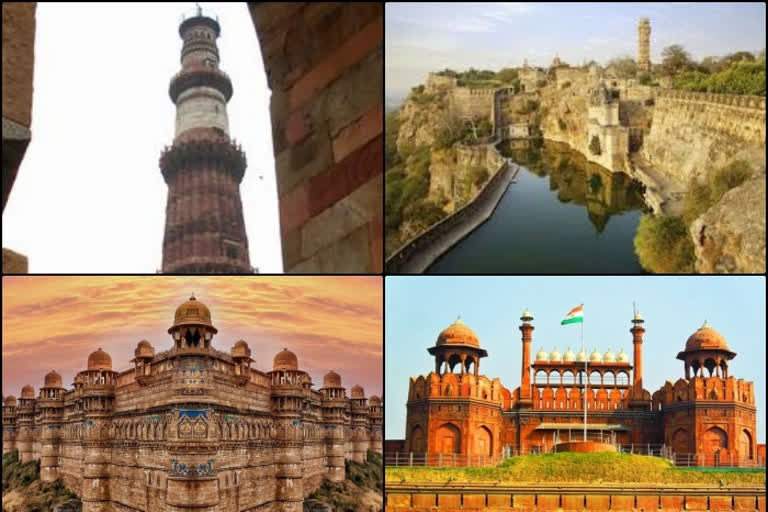New Delhi: A day after monuments across the country reopened their doors for visitors following a gap of more than three months amid coronavirus-induced lockdown, only a handful of people visited these sites.
The Archaeological Survey of India (ASI) which opened its monuments and museums on July 6 has capped visitor entry at every site from 1,000-2,500 per slot: 9 am to 12 pm and 12 pm to 6 pm, officials said.
Tickets to visit these places can be booked online.
ASI's top sites which generate the maximum footfall and revenue have been hit hard.
According to officials, around 60 visitors bought tickets for Qutub Minar in Delhi which had a capping of 1,500 visitors per slot, on Tuesday.
The afternoon slot, which is the most sought-after timing, saw only 28 tickets booked till 4 pm.
On normal days, the site gets around 8,000-12,000 visitors per day.
At Red Fort, the most popular destination for domestic and foreign tourists in the national capital, the footfall barely reached 100, with just around 51 tickets booked for the afternoon slot.
Read:| Delhi: Archaeological Survey of India monuments reopen, masks mandatory
Popular monuments like Jodhpur's twin forts: Chittorgarh Fort and Kumbhalgarh Fort recorded a footfall of around 150 each, while the Gwalior Fort in Bhopal, Bellary Fort in Hampi and the Mattancherry Palace Museum in Thrissur saw no visitors in the afternoon slot and a handful in the forenoon slot, officials said.
The officials, however, admitted that low footfall was expected at most of these sites given the current mood of the country.
Around one-third of the top revenue-generating monuments are located in the five states that are worst affected by the COVID-19 pandemic. These include Maharashtra, Tamil Nadu, Delhi, Gujarat, and Uttar Pradesh.
Monuments like the Taj Mahal in Agra, Ajanta Ellora Caves in Aurangabad and Sun Temple in Konark were not open for the public, while the other top grossers like the Group of Monuments in Mamallapuram (in Tamil Nadu) saw no takers in the afternoon slot with the entire 1,000 tickets remaining unsold.
The group of monuments in Khajuraho, Madhya Pradesh saw around 350 tickets being sold out of the 1,000 allowed.
In Bihar, ASI sites like the Archaeological Site Museum, Nalanda saw around 40 visitors, the Ancient Site Of Vikramshila around 20 visitors and the Archaeological Site Museum, Bodhgaya had very few visitors, officials said.
The Cooch Bihar Palace and the Hazarduari Palace in West Bengal saw around 30 visitors each.
As many as 3,691 centrally-protected monuments and archaeological sites maintained by the ASI in the country were shut from March 17 because of the coronavirus crisis.
PTI report
Read:| Agra: Taj Mahal to reopen on July 6 amid relaxations in COVID-19 lockdown



